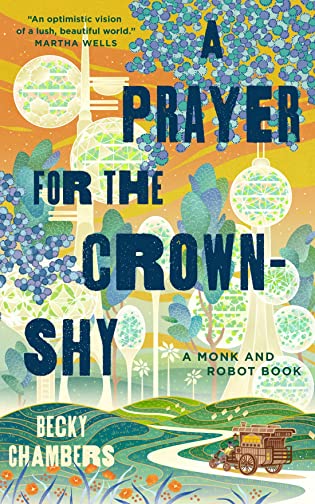 A Prayer for the Crown-Shy (Monk & Robot, #2) by Becky Chambers
A Prayer for the Crown-Shy (Monk & Robot, #2) by Becky Chambers Format: eARC
Source: supplied by publisher via NetGalley
Formats available: hardcover, ebook, audiobook
Genres: fantasy, hopepunk, science fiction, solarpunk
Series: Monk & Robot #2
Pages: 160
Published by Tordotcom on July 12, 2022
Purchasing Info: Author's Website, Publisher's Website, Amazon, Barnes & Noble, Kobo, Bookshop.org, Better World Books
Goodreads
After touring the rural areas of Panga, Sibling Dex (a Tea Monk of some renown) and Mosscap (a robot sent on a quest to determine what humanity really needs) turn their attention to the villages and cities of the little moon they call home.
They hope to find the answers they seek, while making new friends, learning new concepts, and experiencing the entropic nature of the universe.
Becky Chambers's new series continues to ask: in a world where people have what they want, does having more even matter?
My Review:
This book is the prayer, and we are all, all of us who read this marvelous story, the crown-shy.
 Crown shyness is a real-world phenomenon. About trees. Which is totally fitting for this story that features two people – even though one of them doesn’t refer to itself as “people” – who are exploring both friendship and all the myriad wonders of their world together.
Crown shyness is a real-world phenomenon. About trees. Which is totally fitting for this story that features two people – even though one of them doesn’t refer to itself as “people” – who are exploring both friendship and all the myriad wonders of their world together.
Some trees spend their early years growing taller as fast as they can, reaching for the open sky and the sun. Then they start growing outwards, filling in branches and creating their part of the canopy of a forest. You’d think that those leaves and branches up in the canopy would overlap with the trees on all sides, creating a barrier between the sun in the sky and the ground far, far below.
But they don’t. Many species are “crown-shy”, meaning that they somehow know where their limits are and leave just a bit of space, a channel, between where their leaves end and the next tree’s leaves begin. So that the sun does reach the ground to give other denizens of the forest a chance to grow.
The communities in Panga are like that. They grow but so big and no further, so that each village has enough – actually more than enough – to sustain itself and its people. No one needs to want for more.
And that’s what’s at the heart of the Monk & Robot series so far. That question about what do beings want, either as individuals or as a community. What, for that matter, is there to want once society has somehow evolved past our current, endless hunger for more?
The tea-monk Sibling Dex and the robot Mosscap met in the first book in this terrific series, A Psalm for the Well-Built, because they were both asking variations of that question. Sibling Dex had pulled off the beaten path into the woods because they were in the throes of burnout and were asking themselves if what they were doing was what they wanted to do. If their endless journey was all there was or would be to their life.
While Mosscap was asking itself what had happened to the humans after the robots achieved self-awareness and walked away into the depths of the forest. What did humans need? And more specifically, was there anything that robots could do for them or with them?
The first book followed Dex’ journey deep into the wilderness, into Mosscap’s territory, to a remote location that was once sacred to their god and their service as a tea-monk. This second journey goes the other direction, as Dex and Mosscap head towards the City, home of the University and all its scholars, so that Mosscap can ask its questions of the people in Dex’ world who are supposed to have all the answers.
Only to discover that they’ve both already found their destination. And that what they truly need is each other.
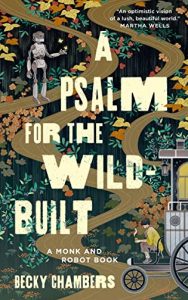 Escape Rating A: If you’re looking for a story that will shed some light into the darkness, just as those crown-shy trees let light through to the forest floor, read A Psalm for the Wild-Built and A Prayer for the Crown-Shy. Because they are the purest of hopepunk, and we all need that right now.
Escape Rating A: If you’re looking for a story that will shed some light into the darkness, just as those crown-shy trees let light through to the forest floor, read A Psalm for the Wild-Built and A Prayer for the Crown-Shy. Because they are the purest of hopepunk, and we all need that right now.
This is a book that asks some pretty big questions, and then lets its two protagonists work out the answers for themselves as they travel through a lovely world that may have solved many of the problems we have today but still doesn’t have all the answers.
As Mosscap discovers, the value is in both asking and being asked the questions. The robot started out with “what do humans need?” The answers that it finds surprise it. In a world where striving for more for more’s own sake seems to have been eliminated, what humans need seems to boil down to one of two things.
Either someone needs help with a very specific concrete issue that either they haven’t gotten around to or for which there isn’t anyone local with the right skills or knowledge. Or, the answer is more existential, where the short version is often something like “purpose” or “fulfillment”. The kinds of things that a person needs to determine for themselves.
As does a robot. Mosscap discovers that it has no answer for itself to its own question. It doesn’t know – at least not yet – what it needs or what its fellow robots need. I sincerely hope that the series will continue, and that we’ll get to follow Mosscap and Dex as they hunt for their own answers.
In the end, this book is an antidote to so much that is happening right now in the world. It’s a walk through light and beautiful places, led by two beings who have learned that friendship is the most important journey of all.

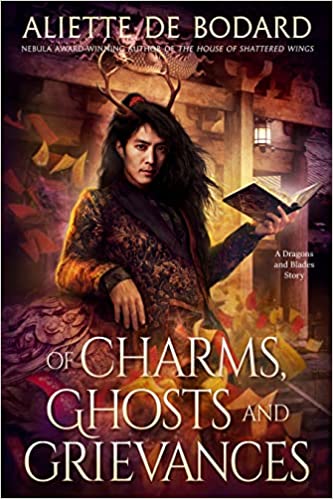 Of Charms, Ghosts and Grievances (Dragons and Blades #2) by
Of Charms, Ghosts and Grievances (Dragons and Blades #2) by 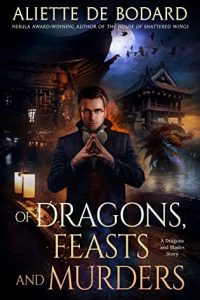 Escape Rating A-: As I said I still haven’t read
Escape Rating A-: As I said I still haven’t read 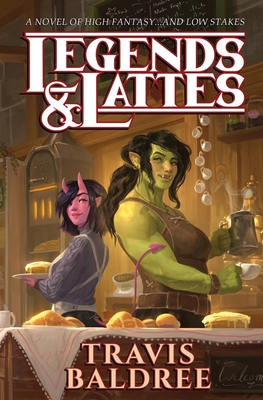 Legends & Lattes by
Legends & Lattes by 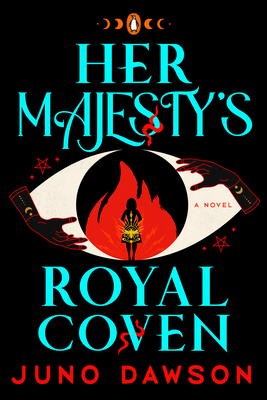 Her Majesty's Royal Coven (Her Majesty's Royal Coven, #1) by
Her Majesty's Royal Coven (Her Majesty's Royal Coven, #1) by 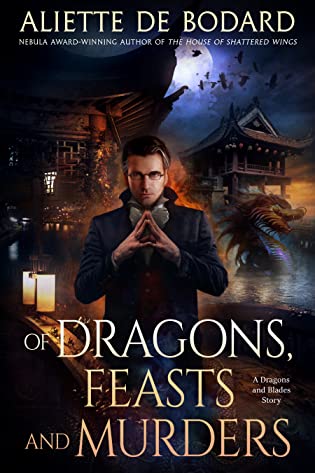 Of Dragons, Feasts and Murders (Dragons and Blades, #1) by
Of Dragons, Feasts and Murders (Dragons and Blades, #1) by 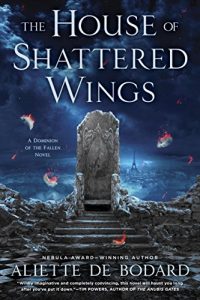 Little did I know that
Little did I know that 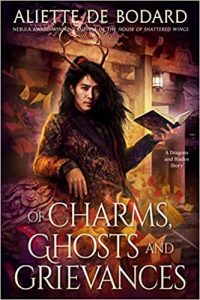 So it has the appeal of a mystery in that there’s a dead body and an investigator, while it also has the things that make epic fantasy work so well, just on a smaller scale. There are political shenanigans and court intrigues, everyone is trying to get one over on everyone else – whether they’re part of the murder plot or not – and the throne is under threat by forces unknown who either committed the murder or plan to take advantage of it.
So it has the appeal of a mystery in that there’s a dead body and an investigator, while it also has the things that make epic fantasy work so well, just on a smaller scale. There are political shenanigans and court intrigues, everyone is trying to get one over on everyone else – whether they’re part of the murder plot or not – and the throne is under threat by forces unknown who either committed the murder or plan to take advantage of it.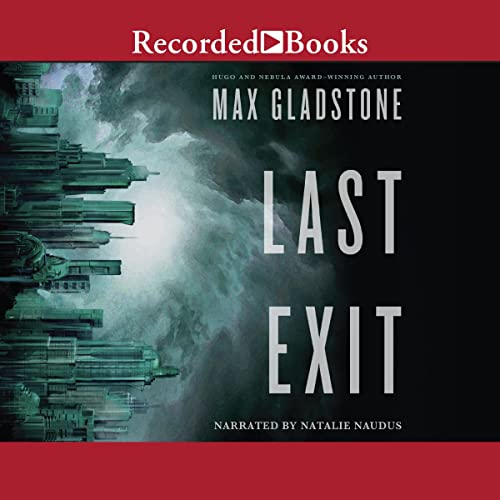 Last Exit by
Last Exit by 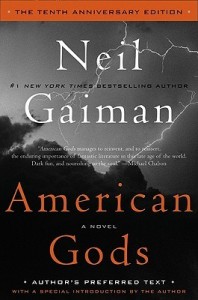 Escape Rating A-: In the end, Last Exit is awesome. But it takes one hell of a long and painful journey to reach that end. Because it starts with all of them not just apart, but in their own separate ways, falling apart. And it ends with all of their demons coming home to roost – and nearly destroying them – as they relive the past and do their damndest to push through to either some kind of future – or some kind of sacrifice to balance out the one they already made when they lost Sal.
Escape Rating A-: In the end, Last Exit is awesome. But it takes one hell of a long and painful journey to reach that end. Because it starts with all of them not just apart, but in their own separate ways, falling apart. And it ends with all of their demons coming home to roost – and nearly destroying them – as they relive the past and do their damndest to push through to either some kind of future – or some kind of sacrifice to balance out the one they already made when they lost Sal.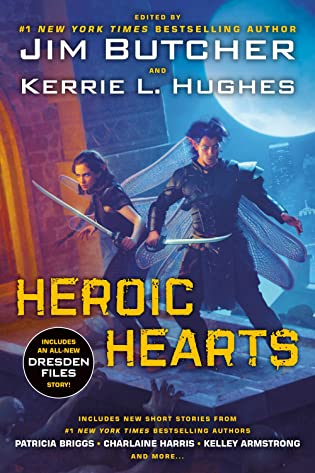 Heroic Hearts by
Heroic Hearts by 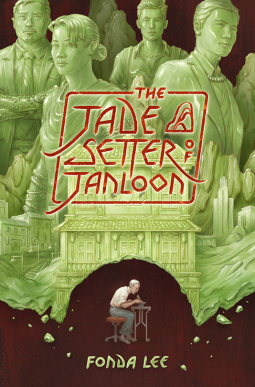 The Jade Setter of Janloon (Green Bone Saga #0.5) by
The Jade Setter of Janloon (Green Bone Saga #0.5) by 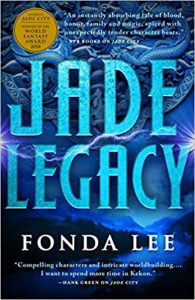 When I finished
When I finished 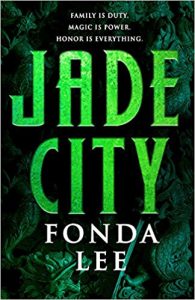 Escape Rating A+: The Jade Setter of Janloon is an absolute chef’s kiss of a coda to the marvelous
Escape Rating A+: The Jade Setter of Janloon is an absolute chef’s kiss of a coda to the marvelous 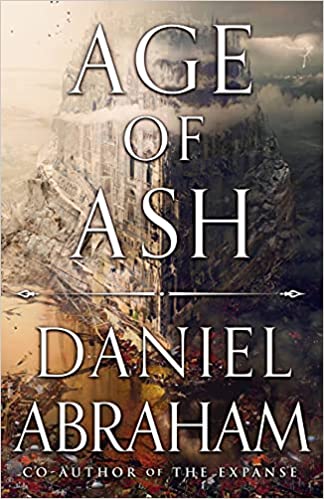 Age of Ash (Kithamar, #1) by
Age of Ash (Kithamar, #1) by 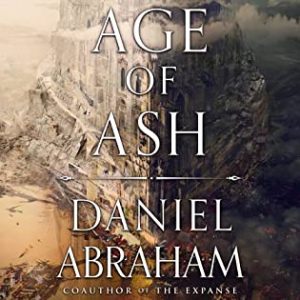 Escape Rating B: Oh do I have mixed feelings about this one, but let me get this out of the way first. I listened to the audiobook of Age of Ash, and the narrator did an excellent job with the material. But, but, but I had some serious issues with the material. This turned out to be one of those books where I was content enough to continue the audio because the reader was terrific but had absolutely ZERO compulsion to switch to the ebook because I just wasn’t compelled to finish the story any faster. The couple of times I tried to switch to the text it kind of turned me off so I went back to the audio.
Escape Rating B: Oh do I have mixed feelings about this one, but let me get this out of the way first. I listened to the audiobook of Age of Ash, and the narrator did an excellent job with the material. But, but, but I had some serious issues with the material. This turned out to be one of those books where I was content enough to continue the audio because the reader was terrific but had absolutely ZERO compulsion to switch to the ebook because I just wasn’t compelled to finish the story any faster. The couple of times I tried to switch to the text it kind of turned me off so I went back to the audio.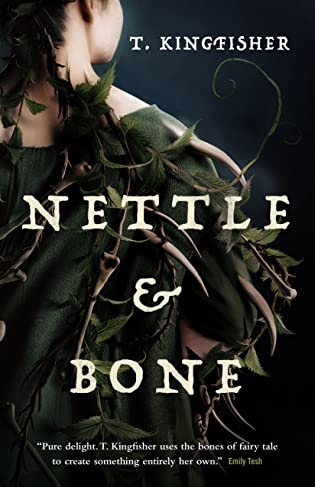 Nettle & Bone by
Nettle & Bone by 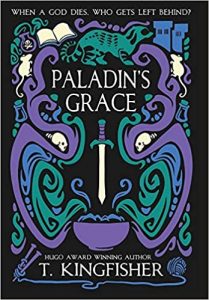 Which is another way that this is a story about fairness, privilege, and the actual powerlessness that afflicts people in positions of seeming power – at least if those people are female.
Which is another way that this is a story about fairness, privilege, and the actual powerlessness that afflicts people in positions of seeming power – at least if those people are female.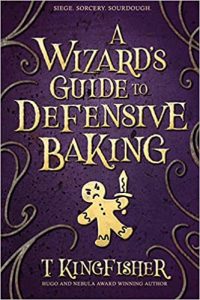 Escape Rating A+: I was looking for something by T. Kingfisher AKA Ursula Vernon to review as part of this Blogo-Birthday Celebration Week because so far I’ve loved everything of hers that I’ve read, especially
Escape Rating A+: I was looking for something by T. Kingfisher AKA Ursula Vernon to review as part of this Blogo-Birthday Celebration Week because so far I’ve loved everything of hers that I’ve read, especially